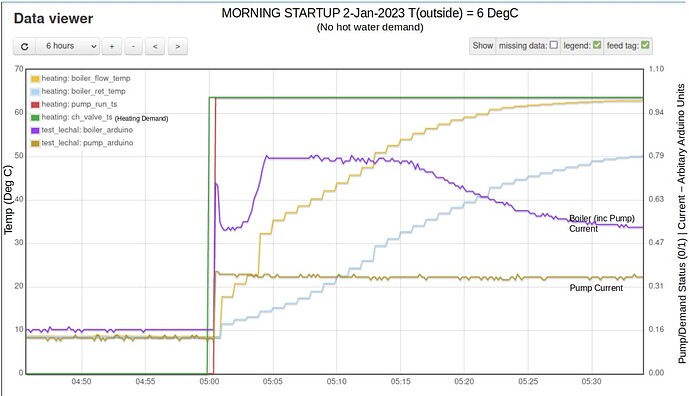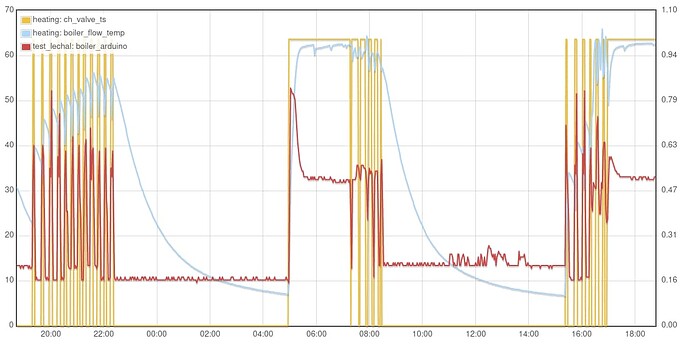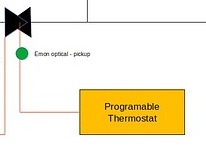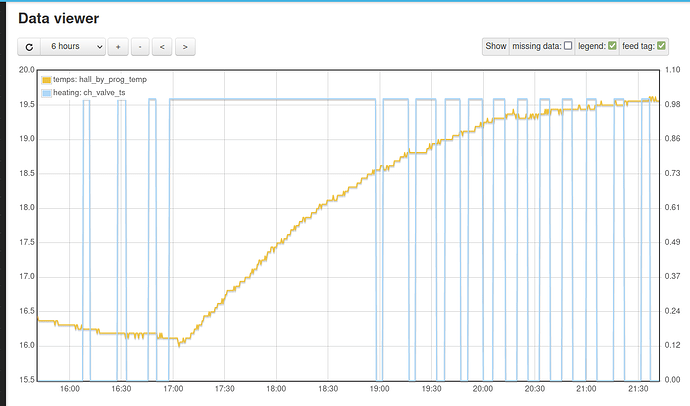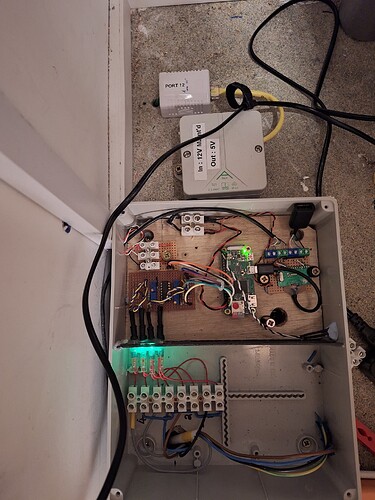Perhaps a bit off topic but the data was collected with my emon and add home made add on’s…
I have a Boiler, Worcester Bosch Greenstar 24Ri around 12 years old and in recent years instrumented it measuring flow/return temperatures, valve positions and the boiler / pump current. The radiators have TRV’s either manual or some are programmable ones with timers but none are “smart” I have a wireless programmable thermostat for the main temperature control. The bypass valve is pressure operated. It’s a fairly typical setup, see below.
The valve positions come form optical isolators, the current sensors are simple CT’s with an Arduino nano, there is no voltage sensor/power factor calculation. The current sensors are not [yet] calibrated, but let you see when the boiler is firing from the fan current. Temperatures come from DS18B20’s.
This gives some quite nice information on the boiler performance, you can see this morning when it fired up at 05:00
Where I am confused is what happens when the house gets to temperature, the programmer seems to change to some sort of PWM,
Over 20 minutes the programmer calls for heat; the zone valve opens, the boiler gets a call for heat from the switch, it starts the pump and goes through a startup sequence, and fires. After 6 minutes the programmer stops asking for heat, the valve closes. The boiler stops firing, but keeps the pump running as it has overrun protection.
At this point the pump is just pumping round a short bypass loop, the heat is being dissipated to the pipework between the boiler and airing cupboard (not usefully in my radiators!) After 3 minutes the pump stops. A minute later the programmer calls for heat and the process starts again.
This seems quite wasteful, both as the boiler is constantly being cycled on and off, I don’t have a way of monitoring the gas but I am assuming from the current starting it uses more than keeping it running. It also generates a lot of start cycles and wear,
Questions:
-
The dumping the heat into the bypass loop also seems wasteful, would it not be better to dump into the radiators loops, I have no idea if this is a significant waste or not, I don’t know if the pump overun is on a timer or on a thermostat.
-
Does anyone have similar data from a “dumb” thermostat / timer?
-
Is this the definition of “boiler cycling” or is boiler cycling caused by the temperature sensor in the boiler on the return?

